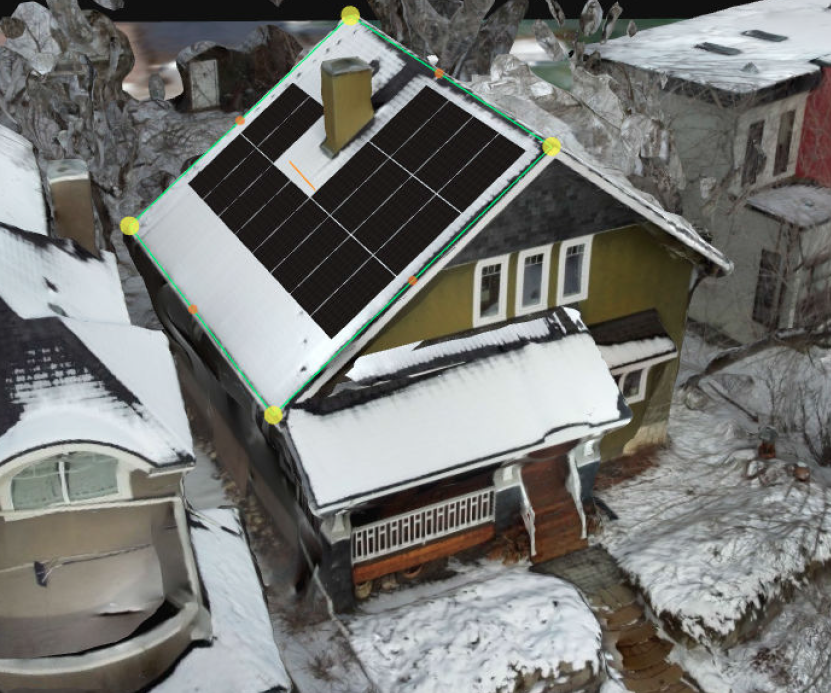Last year, I nearly fell off my chair when I was quoted $150,000 to convert my 1,800-square-foot home to net-zero. That price included solar panels, a heat pump, an electric water heater, eight inches of additional exterior insulation, and 15 triple-pane windows. As much as I’d love to do it, the investment was beyond affordable.
I’ve been keen to go solar ever since our neighbour Chris set the example with the first installation on our street. He’s the founder of a family business that designs and builds gas stations. What kind of climate activist would I be if I didn’t follow suit?
It may seem like a contradiction, but there are people in Alberta who make their living in the fossil fuel industry and still believe we need to transition to clean energy. For example, Iron & Earth is an organization of former petroleum industry workers that helps retrain people for the renewable energy industry.
Not everyone in my home province is wearing blinders when it comes to climate change. I believe that at some point in the near future, the petro-party will be over and a lot of skilled workers in Alberta will be looking for new careers. The world is pivoting to renewables at an exponential rate. Fortunately, a booming solar industry will replace some of those lost jobs.
It’s not just utility-scale solar driving the boom. There is tremendous demand for residential solar, as well. When I decided to jump on the green energy bandwagon, I was told the waiting list was several months long. High electricity prices in the winter of 2022 were driving an unprecedented number of orders the following spring.
I was hoping to have my panels installed in time for the sunniest days of the summer. Instead, I waited impatiently as the days got shorter. It didn’t help that my install was delayed another four weeks when I got COVID-19 at the end of July and the installers didn’t want to come anywhere near our house.
In March 2022, I received a quote from SkyFire Energy in Calgary for a 6.5KW array and my total cost was about $10,000 after the $5,000 Greener Homes Grant from the federal government. At this price, I was able to cajole a reluctant approval from my wife.
SkyFire estimated that we would save over $600 per year on electricity, making the payback period around 15 years. However, that was based on our previous year’s billing when electricity costs were as low as 7.5 cents per KWh. Our electricity skyrocketed to 20 cents per KWh in the winter of 2022. At this rate, our payback period would be under 10 years.
The number of solar panels we were allowed to put on our house was limited by our previous year’s electricity usage. Under the current rules in Alberta, we are not allowed to be net generators for the year, even though we have roof space for more panels. By utilizing all our roof space, the payback period would’ve been much shorter.
The next challenge was how to best pay for the solar installation. The City of Calgary announced that the Clean Energy Improvement Program (CEIP) would be available in the fall of 2022. That program provides a low-interest loan for energy efficiency and renewable energy upgrades. The nice thing about the CEIP is that the loan payments are added to the municipal tax bill and stay with the house, even after it is sold.
I opted not to wait for the CEIP when the Canada Greener Homes Loan program was announced. It was a good decision. When the CEIP was finally open to applicants last month, it was paused after more than $7 million in financing requests were received within the first 24 hours.
I applied for the Greener Homes Loan and was approved for an interest-free loan that covers the remainder of the solar installation (after receiving the Greener Homes Grant). It would’ve been great if the story ended there, but once we committed to going solar, there were a few additional costs we hadn’t anticipated.
Squirrel guards were expensive, but they prevent the little devils from nesting under the solar panels. Our roof is too steep for me to go climbing up there, so I bit the bullet on this option. I also wasn’t going to install snow guards, but after seeing the falling-snow waivers in the purchase contract, I decided to be more mindful of our neighbours’ safety.
Then there were a couple home maintenance needs we were forced to deal with sooner than expected. The shingles on our roof were 22 years old. It wouldn’t make much sense installing solar panels without replacing the roof first. New shingles and new eavestroughs doubled the project cost.
My wife decided that with all this “investment” in the house, we should also paint the exterior. I had to agree it was badly needed. Our green stucco was taking on a sickly yellow colour. Before the dust settled on our new solar installation, I was being accused of spending $35,000 on solar panels.
Was it worth taking on a mountain of debt? If we just look at the cost of the solar panels in isolation, then I would say absolutely yes! The payments on the Greener Homes Loan are low and interest-free. Our panels went live in late September and over the first four months, which includes some of the darkest months of the year, we’ve generated 1.26MWh of electricity and we’ve cut our CO2 emissions by nearly 500 kilograms.
Our solar panels have a 25-year warranty, but they could continue to operate for more than 35 years. That means our solar panels will save us money for decades after they’ve been paid off. That’s going to get sweeter if electricity prices increase in the coming years.
It’s also worth noting that there were some unexpected savings on our electricity bill. For the first time in my life, I found myself being careful to switch off lights when I left a room. Having solar panels changed my behaviour!
Replacing roofing tiles is one of those major home expenses that people do because waiting until the roof leaks could be a much bigger expense. Why don’t people consider solar panels as an expense that prevents far greater long-term costs due to climate change? Paying for renewable energy or net-zero options makes even more sense when this is included in the cost of a building new home.
My strongest motivation for installing solar panels was to reduce our CO2 emissions. I’m hoping some of our neighbours will follow our lead. I see solar as an investment in a future where all homes and their vehicles will be powered by rooftop or district energy.
My hope is that as a society we will finally stop burning fossil fuels, and I’m willing to make an investment to help make it happen. My neighbour Chris put it bluntly: “Saving the planet costs money.”
Rob Miller is a retired systems engineer, formerly with General Dynamics Canada, who now volunteers with the Calgary Climate Hub and writes on behalf of Eco-Elders for Climate Action. As a climate activist, he works to stop old-growth logging in B.C., to reject coal mining on Alberta’s eastern slopes, to facilitate community involvement in urban afforestation, and to advocate for renewable energy. Miller uses a “systems-thinking” approach to learn, understand, and defend the ecosystems that are under threat by climate change and unrestrained resource development. He lives in Calgary.
If you need to replace your
If you need to replace your roof shingles away then I wonder if it makes more financial sense to install solar shingles instead of solar panels.
Residential, commercial and
Residential, commercial and industrial solar installations (and wind to a lesser degree) are a HUGE untapped energy resource Canada wide. Unfortunately, as illustrated in this article, the various provincial regulatory agencies’ limitations and restrictions inhibit the unleashing of the full potential of these renewable energy sources.
Think about all of the flat roofs on a myriad of commercial and industrial buildings across this country for a start. These large buildings could supply a large amount of electricity to the power grid while also lowering the overall energy costs for the buildings themselves. For a start, all new commercial and industrial building construction should be mandated to include a certain amount of solar panel installation as a requirement for getting approval for construction. Governments should also expand their grant and interest-free loan programs to promote, encourage and support this, and other, innovative power generating initiatives.
The cost of renewable energy infrastructure has dropped precipitously over the last decade and will likely continue to do so. In addition, the research and development of new technologies in solar panel, wind turbine, and battery storage design, construction and functionality are also progressing at a rapid pace; this will surely accelerate the adoption and acceptance of renewable energy by the general public.






Comments